Aventurine, with its natural shimmer and spectrum of colours, is a gemstone deeply rooted in healing and positive energies. Commonly associated with luck, abundance, emotional healing, and personal growth, it offers a wealth of benefits to those who embrace its energy. Throughout history, ancient civilizations used aventurine for ornamental purposes, including jewelry and statues. This article serves as your no-nonsense guide to understanding aventurine and how it can contribute to wellness in all facets of life. Continue reading to learn about leveraging aventurine properties for your benefit, with practical advice and straightforward insight.
Introduction to Aventurine
Aventurine is a remarkable gemstone celebrated for its captivating colors and mesmerizing shimmer, known as aventurescence. This sparkling effect is created by tiny inclusions of minerals like mica or goethite, which scatter light and give aventurine its signature glitter. Aventurine feldspar, also known as sunstone, is a related mineral that also displays aventurescence due to similar inclusions. As a prized member of the quartz family, aventurine is widely recognized for both its beauty and its powerful metaphysical properties.
The most sought-after variety, green aventurine, is especially valued for its rich green colour and soothing energy. Aventurine is considered an ideal stone for those seeking to promote emotional balance, alleviate stress and anxiety, and bring positivity into their lives. Its nurturing effect makes it a favourite for emotional healing and personal growth, helping individuals find balance and harmony during challenging times. Whether admired for its visual appeal or its supportive properties, aventurine stands out as a truly remarkable gemstone that continues to inspire and uplift.
Key Takeaways
-
Aventurine is a multifaceted quartz stone known for its aventurescence, offering a range of colours and associated healing properties, and is found in locations like India, Chile, and Russia.
-
It possesses extensive healing properties that benefit the emotional, physical, and spiritual aspects of a person, including improving heart health, fostering emotional stability, and aligning chakras for spiritual growth. Aventurine is also said to provide calming effects that help reduce blood pressure and improve circulation, contributing to overall well-being.
-
Several factors, such as quality, size, colour, and market demand, influence the value and price of aventurine. These factors determine its overall worth and affordability.
-
Practical uses of aventurine include meditation, wearing it as jewelry, and placing it in living spaces. It requires regular cleansing and charging to maintain its energy. It can enhance astrological connections, especially for Cancer, Aries, and Leo, and can be paired with other crystals for amplified effects.
Aventurine's Unique Qualities and Origins

Aventurine is more than just a pretty face in the world of gemstones; it is an amazing stone that belongs to the illustrious quartz family. This beautiful stone stands out with its signature sparkle, derived from its mineral inclusions, which twinkle like celestial bodies in a green, blue, yellow, or red backdrop. Aventurine can be cut and polished into various shapes for use in jewelry, such as beads and cabochons, making it a versatile choice for adornment.Green aventurine, in particular, is often referred to as the ‘luckiest stone’ because of its healing properties, making it a popular choice for aventurine jewelry. It is also the most common and popular type of aventurine, celebrated for its vibrant colour and beneficial energies. High-quality green aventurine specimens are prized for their deep green coloration, which enhances their visual appeal and desirability.The name aventurine itself has whimsical roots, coming from the Italian word ‘a ventura’, which means ‘by chance’, a nod to the serendipity of its discovery.It’s not just aventurine’s diverse colour palette that makes it an excellent stone; it’s also the captivating aventurescence that sets it apart from other gemstones. This shimmering or glistening effect is thanks to the randomly spaced iridescent sparkles, primarily caused by the inclusion of minerals like mica or hematite.Aventurine is often green in colour but can also occur in shades of orange, blue, yellow aventurine, red aventurine and brown, each with its own distinct aventurine crystal healing properties, adding to its diverse appeal.
Formation and Locations

Beneath the Earth’s surface, in conditions of high-grade metamorphism, the aventurine quartz comes to life. The transformation of quartzite, influenced by the presence of mineral impurities, results in the formation of this translucent quartz. Plagioclase can sometimes be present as an inclusion in aventurine, contributing to its unique appearance. These natural stones are then unearthed in various locations around the globe, cementing aventurine’s reputation as a stone without a clear boundary setting.
India, with its regions of Mysore and Chennai, proudly stands as a significant source of green aventurine, also known as Indian jade. However, the quest for aventurine does not end there; Chile, Spain, and Russia also contribute to the stone’s availability, ensuring that aventurine’s natural beauty and metaphysical properties can be appreciated far and wide. Aventurine is also found in other locations worldwide, including Brazil, Austria, and Tanzania, further showcasing its global presence.
Ethical sourcing and responsible mining practices are increasingly important in the aventurine supply chain. By supporting suppliers who prioritize ethical sourcing and responsible methods, buyers help promote sustainability and fair trade within the gemstone industry.
Aventurescence: The Shimmering Appeal

The allure of aventurine lies in its ability to captivate the eye with a shimmering appearance that rivals the stars. This shimmering effect, known as aventurescence, is the stone's signature trait, bringing glass-like brilliance to the natural aventurine crystal.
It is the bright inclusions, particularly those of silvery green mica or the reflective sheen of hematite, that imbue aventurine with its enchanting sparkle, making it an excellent choice for aventurine jewelry. Brown Aventurine can vary from light to dark brown and typically contains inclusions like pyrite or goethite that create its sparkling effect. Red aventurine, ranging from reddish-brown to deep red, owes its aventurescence to hematite or goethite inclusions, adding to its unique charm.
In green aventurine, the shimmering effect is not merely for show; it symbolizes the potential to attract abundance and prosperity into one's life. The random yet intentional arrangement of mica mineral inclusions within the stone creates a dazzling display that encourages wearing aventurine as a talisman of good fortune.
Whether it graces a necklace or is held in the palm during meditation, aventurine's shimmering appearance is more than just a visual delight—it is a beacon of positive energy. Understanding the green aventurine meaning can help harness its full potential.
Aventurine Meaning and Symbolism
Aventurine is widely considered a stone of luck, prosperity, and new opportunities, making it a favorite among those looking to manifest their desires and attract positive outcomes. Often called the “stone of opportunity,” aventurine encourages adventure and inspires individuals to embrace change, take chances, and pursue their goals with confidence.
Deeply connected to the heart chakra, aventurine promotes love, compassion, and emotional healing, helping to bring inner peace and emotional balance. In particular, Green Aventurine's soothing energy assists in alleviating stress and anxiety, making it a recognized ally for those seeking calm and clarity. In feng shui, aventurine is used to attract abundance and prosperity, often placed in the wealth corner of a room or workspace to enhance financial luck and support new ventures.
Beyond its reputation for luck, aventurine is also valued for its ability to foster positivity, balance, and a sense of well-being. Whether carried as a talisman, worn as jewelry, or used in meditation, this stone serves as a powerful reminder to remain open to new opportunities and to approach life with compassion and optimism.
Types of Aventurine
Aventurine comes in a variety of captivating colours, each with its own unique properties and meanings. The most widely recognized is green aventurine, known for its strong connection to the heart chakra and its ability to promote emotional balance and renewal.
Blue aventurine, associated with the throat chakra, assists in clear communication and self-expression, making it a supportive stone for those seeking to open up and share their ideas.
Red aventurine is linked to the root chakra and is believed to boost physical energy and motivation.
Yellow Aventurine varies from pale to golden yellow, with its shimmer often due to mica or pyrite inclusions. Yellow aventurine is connected to the solar plexus chakra, and is prized for its uplifting energy and ability to bring positivity and confidence.
Aventurine is available in various forms, including jewelry pieces, decorative objects, and loose stones, making it easy to incorporate into daily routines and personal spaces. To maintain its vibrant energy, it’s important to cleanse green aventurine regularly—simply leave the stone under the moonlight or immerse it in a bowl of water to recharge and promote growth and renewal.
No matter the colour or form, aventurine remains a captivating gemstone that supports emotional balance, personal growth, and a sense of well-being.
Blue Aventurine: Distinctive Qualities and Uses
Blue Aventurine stands out as a truly remarkable gemstone, widely prized for its captivating blue colour and soothing energy. Unlike its green aventurine, the blue version is considered the ideal stone for those seeking to promote emotional balance and alleviate stress and anxiety in their daily lives. It varies from light to dark blue and gets its characteristic sparkle from mineral inclusions of dumortierite or crocidolite.
Its calming effects are essential for anyone looking to bring positivity and inner peace into their mind and environment, especially during times of change or emotional upheaval. It is also linked to the throat and third-eye chakras and is believed to enhance communication and promote self-discipline.
This nurturing stone is recognized for its ability to assist in emotional healing, helping individuals let go of negative patterns and embrace a more optimistic outlook. Blue Aventurine is also associated with luck and prosperity, making it a popular choice for those hoping to attract new opportunities and manifest growth, particularly in the spring or when embarking on new ventures. Its energy is thought to encourage renewal, making it a valuable companion for anyone seeking a fresh start.
Mineralogically, Blue Aventurine is a type of quartz whose distinctive colour is caused by the presence of two different minerals, typically goethite or dumortierite. This combination not only gives the stone its unique blue hue but also contributes to its durability, with a typical hardness of 6.5 to 7 on the Mohs scale. These properties make Blue Aventurine suitable for a variety of jewelry pieces, allowing you to carry its balancing energy with you throughout the day.
In the practice of Feng Shui, Blue Aventurine is used to bring harmony and positive energy into a workspace or home. Placing this stone in your environment is believed to assist in balancing energies, promoting growth, and supporting emotional renewal. Its presence can help create a tranquil atmosphere, making it easier to focus on new ideas and maintain a sense of inner peace.
To maintain the vibrant properties of Blue Aventurine, it’s important to cleanse and charge the stone regularly. You can leave it under the moonlight or immerse it in a bowl of water to recharge its energy—just be sure to let it dry thoroughly afterward to preserve its natural beauty and prevent any damage. This simple ritual helps to clear away any accumulated negativity and restore the stone’s nurturing effects.
Whether worn as jewelry, placed in your workspace, or used as a meditation aid, Blue Aventurine is an essential addition to any collection. Its ability to bring emotional balance, promote positivity, and assist in letting go of stress and anxiety makes it a powerful ally for anyone seeking harmony and renewal in their life. With its captivating colour and remarkable properties, Blue Aventurine truly embodies the spirit of growth and new beginnings.
Healing Properties of Aventurine
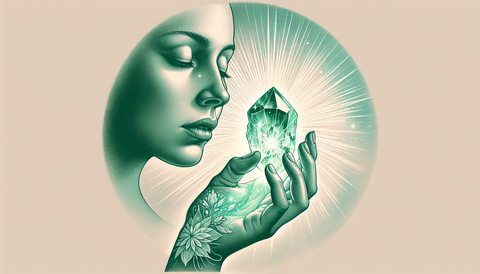
Aventurine is revered not only for its beautiful appearance but also for its comprehensive healing powers. This comforter and heart healer is said to work wonders for those seeking emotional calm and physical well-being.
Known as the stone of opportunity, aventurine crystal healing properties extend to various aspects of health, making it a truly versatile companion for those on a path of healing.
What sets aventurine apart is its ability to:
-
Act as a beacon of healing light, guiding one through the mazes of the emotional body and the physical realm
-
Assist in supporting healing, emotional balance, and the achievement of personal intentions by helping to restore harmony and well-being
-
Offer assistance in the form of stress relief, emotional healing, and metaphysical growth
-
Unlock a world of balanced energy and inner peace, whether you’re grappling with anxiety or searching for spiritual enlightenment
-
Balances and harmonizes the Heart Chakra, clearing emotional blockages and restoring inner peace
Aventurine stone holds the key to these benefits.
Physical Healing Benefits
Aventurine’s physical healing properties include:
-
Supporting heart health
-
Providing an energy boost
-
Balancing blood pressure and improving circulation
-
Stimulating metabolism
-
Reducing cholesterol levels
These properties are vital for maintaining vitality and vigour.
Beyond the heart, aventurine showcases an anti-inflammatory effect, potentially easing skin eruptions, allergies, and migraines.
Moreover, it supports the immune response and offers healing benefits to various systems, including the thymus gland, nervous system, lungs, sinuses, muscles, and urogenital systems.
Aventurine is also thought to increase vitality and is often associated with fertility, particularly in relation to heart and circulatory health. This makes aventurine an excellent stone for those looking to enhance their physical growth and overall health.
In addition to its healing properties, aventurine has a hardness of about 6.5 to 7 on the Mohs scale, which contributes to its durability and makes it suitable for use in jewelry.
Emotional and Mental Healing Powers
Delving into the realm of the heart, aventurine acts as a stabilizing force for emotions, providing comfort and fostering emotional calm. It supports individuals in letting go of concerns, fears, or anxieties, which helps achieve emotional relief and a sense of calm. It is this emotional healing that enables one to embrace change and growth, reducing stress and catalyzing a surge in creativity and perception.
Aventurine’s influence extends to the mental plane, where it encourages confidence and sharpens leadership qualities. In the tapestry of interpersonal relationships, it weaves a network of positive connections, creating a loving atmosphere that contributes to stronger, healthier bonds. The stone’s emotional and mental healing powers are a testament to its ability to resonate with the human psyche, offering solace and inspiration in equal measure.
Spiritual Growth and Chakra Balancing
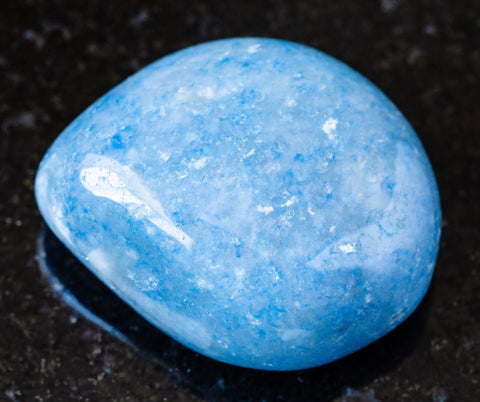
Aventurine is more than a healing stone; it is a growth crystal, fostering spiritual enlightenment and balancing multiple chakras. Green aventurine, in particular, is associated with the heart chakra, clearing emotional wounds, while blue aventurine supports the throat and third eye chakras, enhancing spiritual communication and intuitive awareness. Yellow aventurine is tied to the solar plexus chakra and is believed to increase abundance and creativity.
The crystal's healing properties create a symphony of harmony across the chakras, supporting spiritual guidance and enhancing intuition. This leads to a peaceful existence, encouraging meditation that promotes serenity and allows for deeper self-reflection and connection with the divine. Meditating with aventurine can thus be a profound experience, enabling individuals to tap into the earth's life force and explore the depths of their spiritual growth.
Harnessing Aventurine's Power: Practical Uses and Techniques
The beauty of aventurine lies not only in its aesthetic and healing properties but also in the ease with which it can be woven into the fabric of daily life. By wearing aventurine jewelry, carrying the stone in your pocket or purse to keep its positive energy close throughout the day, or integrating it into one’s environment, individuals can benefit from its auspicious properties in practical and meaningful ways.
Whether you choose to meditate with this powerful stone, wear it as aventurine jewelry, or adorn your home and office spaces with its presence, there are myriad ways to harness aventurine’s energy. You can use green aventurine by placing it in your home or workspace to attract luck, abundance, and new opportunities. Many people incorporate aventurine into their meditation practices to enhance emotional healing and personal growth. Each method offers a unique avenue to maintain a connection with the stone’s positivity and embrace the full spectrum of its healing powers.
Meditation and Chakra Work with Aventurine
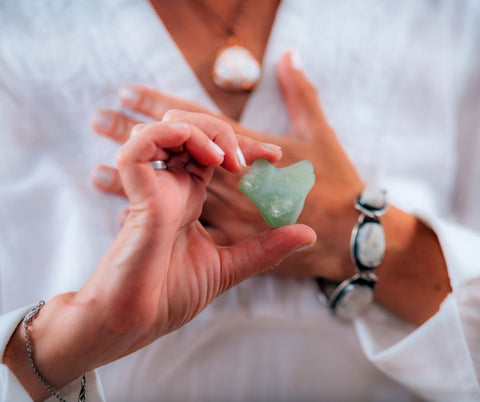
Meditation with aventurine is a transformative practice that aligns the heart and solar plexus chakras, fostering emotional calm and heightening leadership qualities. Green aventurine placed on the heart space during meditation can cleanse the heart chakra, while yellow aventurine placed on the belly uplifts the solar plexus chakra.
Moreover, wearing aventurine jewelry during meditation has several benefits:
-
It aids in maintaining balanced and clear chakras
-
It continuously absorbs power and positive vibes
-
It allows the healing light of aventurine to penetrate deeply
-
It enhances the meditation experience
-
It promotes spiritual growth
This practice can greatly enhance your meditation sessions and help you on your spiritual journey.
Aventurine Jewelry for Everyday Healing
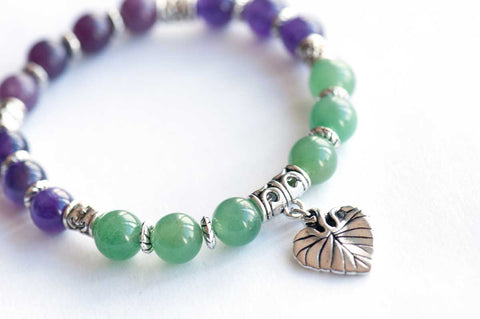
Wearing aventurine as jewelry is a powerful statement of self-care. It keeps the stone’s healing energy in close contact with the skin and chakras, providing constant benefits throughout the day. Whether fashioned into a bracelet, necklace, or ring, each piece of aventurine jewelry serves as a personal talisman for growth, confidence, and luck. Larger aventurine jewelry pieces tend to be more valuable and can make a bold statement. Store aventurine jewelry in a soft pouch or jewelry box to prevent scratches and damage when not in use.
Adorning oneself with aventurine offers the following benefits:
-
Carrying a piece of the earth’s life force
-
A reminder of the beauty and healing power of nature
-
Enhancing emotional well-being
-
Attracting wealth and prosperity
It is a popular gemstone for wearing jewelry.
Incorporating Aventurine into Home and Office Spaces
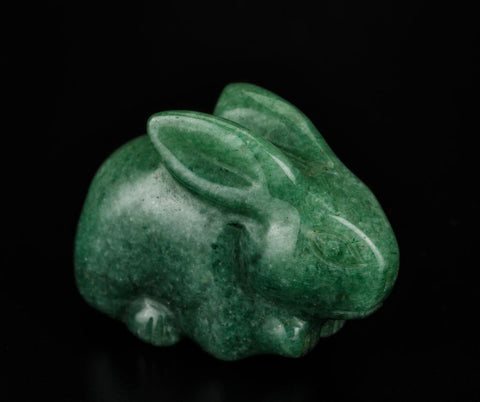
The placement of aventurine in home and office spaces is a subtle yet effective way to cultivate harmony, abundance, and well-being. In work or creative spaces, aventurine acts as a muse, providing a creative kick and nurturing personal growth and success. Additionally, placing aventurine in a home or office is said to protect against electromagnetic pollution and infuse positive energy into the environment. For optimal results, place aventurine in a safe, designated area such as an altar or crystal grid to enhance its energy and protect its vibrational qualities. Avoid exposing aventurine to extreme temperatures, as sudden changes can cause cracks or other damage.
Aventurine’s Wood Energy in Feng Shui aligns with growth and renewal, making it an ideal building stone for decor that promotes a harmonized environment. By tapping into the stone’s natural properties, one can transform their living and workspace into a sanctuary of positivity and inspiration.
Caring for Your Aventurine: Cleansing and Charging Techniques
To ensure that your aventurine remains a potent source of energy, regular cleansing and charging are essential. These practices revitalize the stone, ensuring its continued effectiveness and vitality. After cleaning, always keep your aventurine dry by thoroughly drying it to prevent damage and maintain its appearance. Prolonged exposure to direct sunlight can fade aventurine's colour over time, so store it in a cool, dry place.
Aventurine can be cleansed by gentle washing with warm soapy water or smudging with sage or palo santo. For a deeper energetic cleanse, it may benefit from being buried in salt or cleansed under running water, such as rain.
Clean aventurine stone using mild soap and warm water, utilizing a soft cloth or gentle brush to avoid damage. Keep aventurine away from harsh chemicals, such as household cleaners or bleach, which can damage the stone's surface. Over time, proper care preserves aventurine's beauty and energetic properties, so be mindful of how long it is exposed to sunlight or other elements.
The stone can be charged by placing it in moonlight, especially during a full moon, on a Selenite slab, or briefly in the sun. You can also use clear quartz to cleanse and recharge aventurine, as clear quartz amplifies its energy. Actively working with aventurine by intentionally recharging it with sunlight, moonlight, or nature enhances its spiritual and healing properties. Reconnecting it with the earth through burial is another way to recharge its energy.
Aventurine and Zodiac Signs: Enhancing Your Astrological Connection
Aventurine's healing properties are universally beneficial, but certain zodiac signs may find a deeper astrological connection with the stone. For Cancer, Aries, and Leo, aventurine enhances their intrinsic qualities, bringing balance, harmony, and luck.
Leos may discover that aventurine softens aggressiveness into calmness, while Aries can harness the stone to ignite enthusiasm and maintain a clear mind. For Cancer, the stone supports loyalty, sensitivity, and strength, aligning well with their natural characteristics. Wearing aventurine amplifies these effects, offering a bridge between the celestial and the terrestrial.
Combining Other Crystals with Aventurine
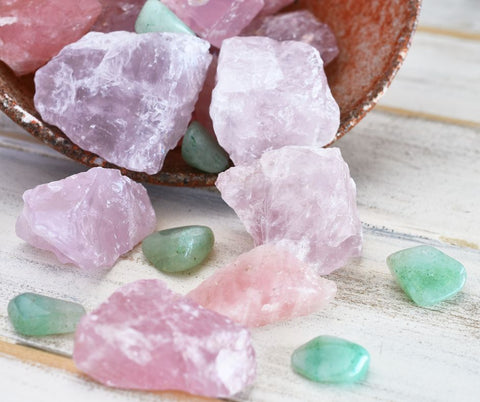
While aventurine is powerful on its own, its healing properties can be magnified when combined with other crystals. Each pairing creates a unique synergy that enhances the overall effects of the stones involved.
Amethyst with green aventurine crystals boosts intuition and wisdom, while rose quartz and aventurine together target the heart chakra, attracting love. Carnelian with green aventurine promotes physical healing, and black obsidian paired with aventurine offers protection against negative energies. Citrine combined with aventurine is believed to attract luck, especially in career, love, and social life.
Summary
Aventurine, with its shimmering beauty and multifaceted healing properties, is indeed a marvel of nature. Throughout this guide, we've explored the stone's origins, the significant impact it can have on our physical, emotional, and spiritual well-being, and the various ways it can be integrated into our lives for everyday healing. Whether worn as jewelry, used in meditation, or placed within our environments, aventurine offers a touch of the divine, harmonizing our internal and external worlds.
As we conclude, let us remember that aventurine is not merely a stone; it is a companion on our journey towards balance, prosperity, and personal growth. Embrace its energy, let it guide you toward healing, and may it be a beacon of light on your path to well-being.
Frequently Asked Questions
Can aventurine be used for all chakras or is it specific to certain ones?
Yes, aventurine can be used for multiple chakras, including the Heart, Solar Plexus, Third Eye, and Throat Chakras due to its associations with each. Green aventurine is particularly effective for the Heart Chakra, while blue aventurine benefits the Throat and Third Eye Chakras.
How often should I cleanse and charge my aventurine stone?
It's recommended to cleanse your aventurine stone once a month and charge it under the full moon or with other methods to maintain its energy and effectiveness. This routine will help keep your stone at its best. To recharge aventurine, expose it to sunlight or moonlight for several hours, visualizing your intentions for the stone while it charges.
Is aventurine suitable for all zodiac signs or only specific ones?
Aventurine is suitable for all zodiac signs, but it is especially connected to Cancer, Aries, and Leo, enhancing their qualities and bringing additional benefits.
Can I wear aventurine jewelry every day, or should it be limited to certain occasions?
Yes, you can wear aventurine jewelry every day to benefit from its healing properties without limiting it to specific occasions, as long as you prefer to do so.
What other crystals pair well with aventurine for enhanced healing properties?
You can enhance aventurine's healing properties by pairing it with crystals such as amethyst for intuition, rose quartz for love, carnelian for physical healing, black obsidian for protection, and citrine for luck. This combination can offer a comprehensive approach to healing.
Is aventurine and Jade the same?
Aventurine and Jade are two different minerals with distinct compositions and properties. Jade actually refers to two separate minerals—nephrite and jadeite—while aventurine is a variety of quartz that contains mineral inclusions, giving it a sparkling effect.
Is aventurine a lucky stone?
Aventurine is often considered a lucky stone, believed to bring prosperity and opportunity to its wearer.
Who should wear Green Aventurine?
Individuals seeking luck, abundance, and growth in various aspects of life can benefit from wearing Green Aventurine.
How many colours of aventurine are there?
Aventurine commonly occurs in shades of green but can also be found in blue, red, brown, and other colours.
Can aventurine be purple?
Green aventurine is the most common variety. Aventurine typically does not occur in purple, although variations exist. However, Purple Aventurine ranges from light to deep purple and often includes inclusions of lepidolite, adding a unique dimension to its appearance.
Is Green Aventurine the same as green quartz?
Green Aventurine and green quartz are different minerals; while they may share a similar colour, they have distinct chemical compositions and properties.









